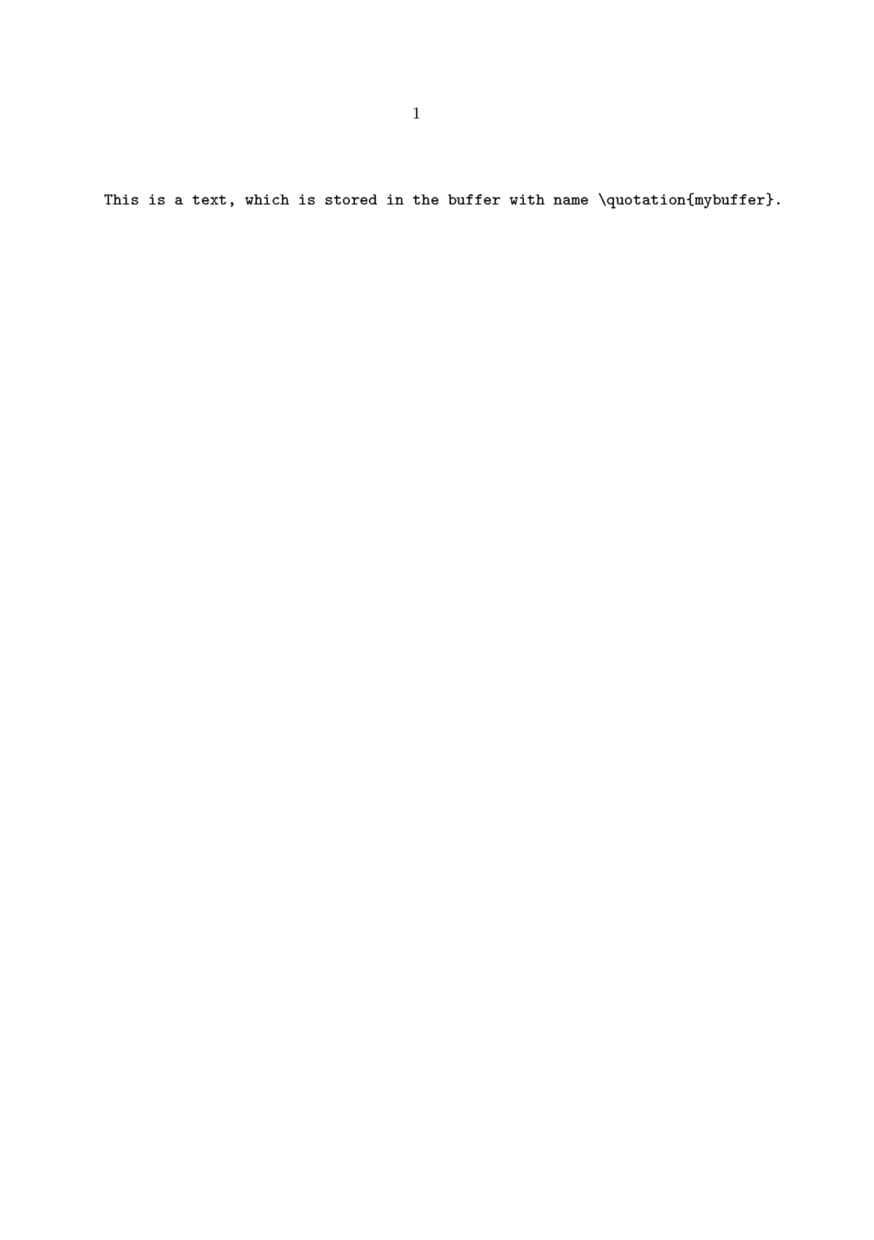Difference between revisions of "Command/typebuffer"
< Command
Jump to navigation
Jump to search
(remove manual syntax, enhance wording) |
|||
| Line 6: | Line 6: | ||
== [[Help:Reference|Syntax]] (autogenerated) == | == [[Help:Reference|Syntax]] (autogenerated) == | ||
<syntax>typebuffer</syntax> | <syntax>typebuffer</syntax> | ||
| − | + | ||
| − | < | + | <syntax>setuptyping</syntax> |
| − | |||
| − | |||
| − | |||
| − | |||
| − | |||
| − | |||
| − | |||
| − | |||
| − | |||
| − | |||
| − | |||
| − | |||
| − | |||
| − | |||
| − | |||
| − | |||
| − | |||
| − | |||
| − | |||
| − | </ | ||
== Description == | == Description == | ||
| − | With <code>\typebuffer[mybuffer]</code> you | + | With <code>\typebuffer[mybuffer]</code> you get the verbatim content of buffer <code>mybuffer</code>, which was previously defined with {{cmd|startbuffer}}. |
| − | To | + | To typeset the contents of the buffer, use {{cmd|getbuffer}}. |
== Example == | == Example == | ||
Revision as of 07:41, 1 June 2022
\typebuffer
Syntax (autogenerated)
| \typebuffer[...,...][...=...,...] | |
| [...,...] | buffer |
| ...=...,... | inherits from \setuptyping |
| \setuptyping[...,...][...=...,...] | |
| [...,...] | name |
| oddmargin | dimension |
| evenmargin | dimension |
| margin | yes no standard dimension |
| option | mp lua xml parsed-xml nested tex context none name |
| style | style command |
| color | color |
| align | see \setupalign |
| lines | yes no normal hyphenated |
| space | on off normal fixed stretch |
| keeptogether | yes no |
| before | command |
| after | command |
| strip | yes no number |
| range | number name |
| tab | yes no number |
| escape | yes no text processor->text |
| indentnext | yes no auto |
| continue | yes no |
| start | number |
| stop | number |
| step | number |
| numbering | file line no |
| blank | see \blank |
Description
With \typebuffer[mybuffer] you get the verbatim content of buffer mybuffer, which was previously defined with \startbuffer.
To typeset the contents of the buffer, use \getbuffer.
Example
\starttext \startbuffer[mybuffer] This is a text, which is stored in the buffer with name \quotation{mybuffer}. \stopbuffer \typebuffer[mybuffer] \stoptext
produces

You can show only a part of a source:
\startbuffer[BB] \setupsomething[] \starttext % begin Do something interesting. %end \stoptext \stopbuffer \typebuffer[BB][option=tex,range={begin,end}]
See also
- \setuptyping – setup also for \type
- \getbuffer - Get back the "formatted" content of a buffer.
- \input - Include the complete content of a text file.
- \startbuffer - Define the content of a temporary buffer.
Help from ConTeXt-Mailinglist/Forum
All issues with: